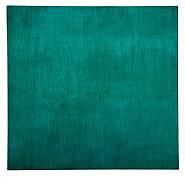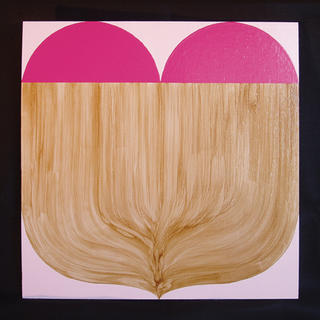I received a comment/question recently from Ben Volta on layering and grids, and thought it was a good direction, so I've decided to put it here, and then respond to it and expound further, so that a better comparison can be made, and so our dialogue isn't stuck in the comments section. Ben said:
Why do you think that the grid is so appealing for artists? Is it because it gives us a system to explore within? . A general appeal towards layering for me harkens back to that first time I learned how to use the layer feature on adobe photoshop. I was amazed at that feature. Wouldn’t it be nice if the physical world had features like photoshop, where you could hide, delete and lock physical layers. Oh well…I see the paint that you place on your “found” surface as a sort of layering process. Do you consciously think about this as you plan your paintings?
I don't have a conclusive answer on the grid, of course, but I considered it in a few ways:
A putting-down (application) of texture without being too committed?
A way of working "all-over" the surface, rather than piecemeal? (Insta-composition?)
Unity?
Continuity?
Groundedness without over-permanence?
Or...is it a crutch, as Ben alluded...I love the grid also, sometimes too much. If not at first, it could become such. As can any compositional method, or any technique could, I suppose.
Additionally, a grid can help bring together a composition that otherwise may have only a tenuous balance.
The grid also has many emotional possibilities, besides formalities...quietness? I allude to this by using the word grounded, etc. What do you think?
More thoughts on layering:
Layering: includes laying down paint on my found surfaces/objects?
YES...I do think of this in terms of layering...and dealing with the "visual vocabulary" I often talk about in reference to my work; those pre-existing parts of the found object/surface that I'm using. A layering of voices, in a way, similar to how one lays down - usually - complementing tracks on a song recording.
In the same way, I need to find the right inflections (borders/edges); words (shapes/symbols/icons); or notes that work with the object/surface and previous layers. And each one that comes along need to work with (or effectively - kind of the same thing - work against) the preceding layers. Including the attuned attitude to the realization of when I need to stop - when the conversation or "song" is at an appropriate stage to let it stay, and move on to another work or piece. It's more mystical than you might realize by looking at my work...I don't often know the hows or whys.
In this way, a series of paintings correlates to a group of songs on a well-crafted album. Variations of elements, but no loss of uniqueness.
In fact, some comments by Douglas Witmer on my recent series of Prayer File paintings, done on old file folders, may shed some more light on this discussion about the dilemmas and challenges when working with found objects (as the first "layer" to respond to):
You ask for more commentary on your "prayer files" and I have been wanting to oblige you. I want to re-iterate that I really find the b/w imagery with the changing-colored borders really bold. I like them
on the support of the file. I think it's tough to try to use found objects in conjunction with geometry that is handled in a way that seems to call for a certain austerity. The found object can really
be a distraction (to me). It's funny...I just saw that piece by Gabriel Orozco? at the PMA that is a human skull covered with a sort of diamond checkerboard pattern. I'm so much more interested in the
pattern than having to deal with the conceptual implications of the skull. Sometimes when I look at your footboard piece we have I wonder what it would be like without the casters. With that piece, I
guess it works for me with its reference to handpainted "decorative arts" like furniture. So the challenge of course is how do you incorporate the ideas implied by the found object and have them add
to what you are doing with the imagery? With the prayer files, I like the ideas of filing, storage, rememberance, categorization...I think it works. My distraction (nitpicky) was (and is) seeing the
letter on the tabs, because then it seems the classification is more specific and I want to know why this design with this letter. You have a knack for and an interest in combining found objects with your
imagery which I think works really well, and it's pretty unique. I think the draft card is a really strong piece. With my work I don't think this way at all and I think I tend to get caught up in particulars when I might be better off just taking it all in. Also, I think lately I have developed such a tendency in my mind toward a "conceptless" or "silent" visual purity that anything (like a letter) suggesting a text gives me problems.
What do you all think? This discussion has been enlightening.
Pertinent comments welcome as always.
Read more...













